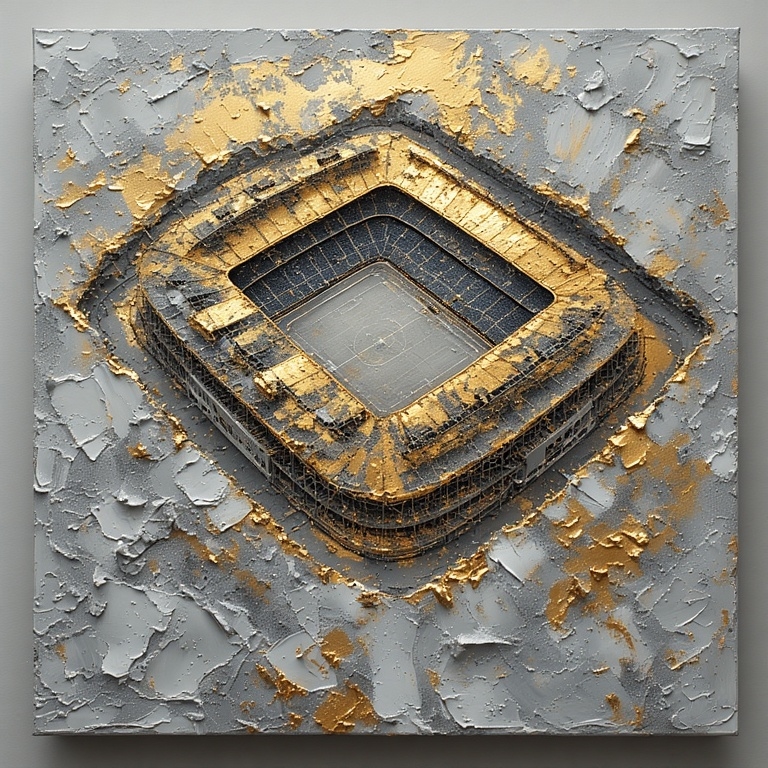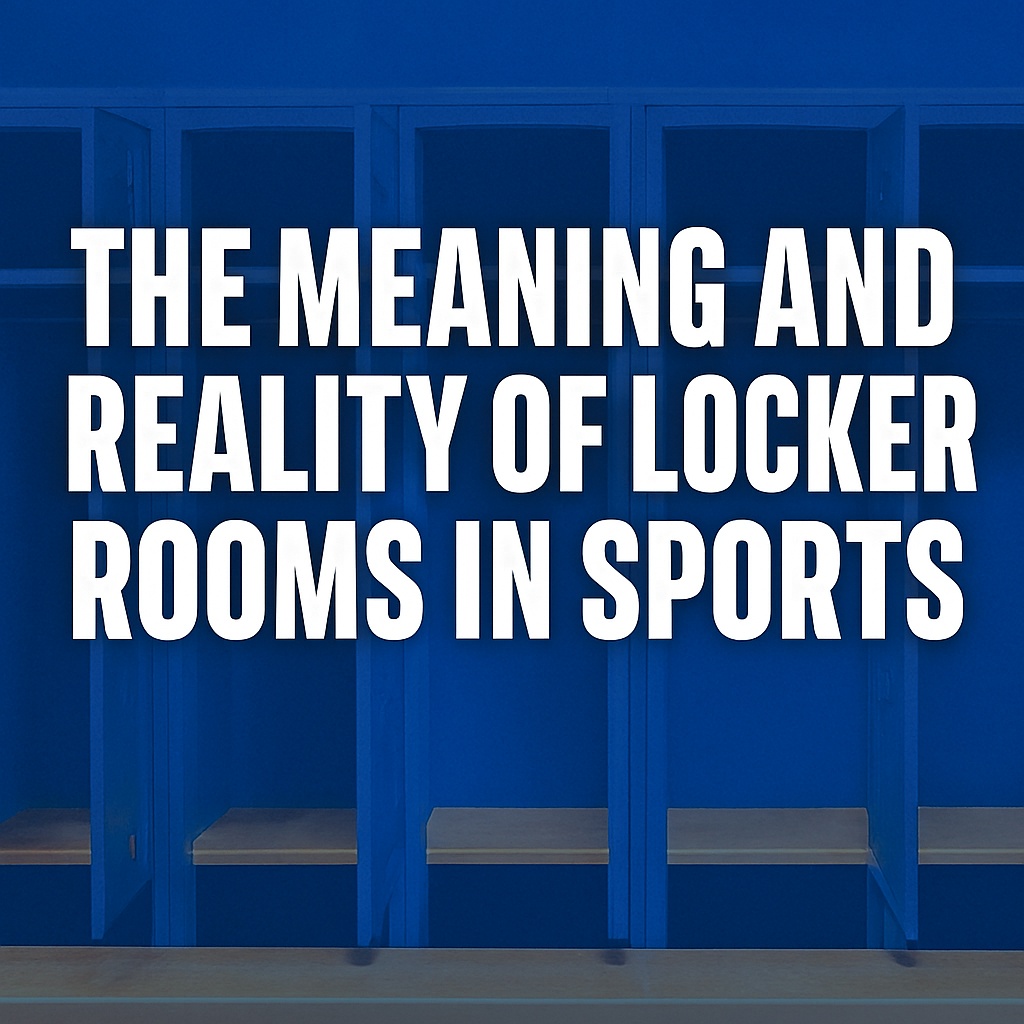White Elephants Stadiums in the Heart of Sydney The Stadiums That Will Never Pay Themselves Back How NSW’s Infrastructure Obsession Is Bankrupting Sport and Community
Sydney & NSW Do Not Need Another Stadium Or Stand Built
Sydney’s stadium saga is not a story of progress—it’s a cautionary tale of political vanity, economic mismanagement, and cultural erosion. The NSW Government has committed billions to stadium rebuilds that defy logic, community need, and fiscal responsibility. Allianz Stadium’s $828 million reconstruction replaced a structurally sound venue with a corporate shell that rarely fills its seats. Stadium Australia, once a symbol of Olympic pride, is now a monument to bureaucratic excess. These projects are not driven by grassroots demand but by opaque deals, private interests, and a misguided belief in prestige infrastructure. The economic models used to justify them rely on inflated projections and ignore historical attendance data. Community sports clubs, meanwhile, are left scrambling for basic resources. The cost of living in Sydney continues to climb, and public funds are siphoned into concrete coliseums that serve few. The government’s narrative of “world-class facilities” masks a deeper truth—these stadiums are financial sinkholes. Maintenance costs alone run into tens of millions annually, with no sustainable revenue stream to offset them. Ticket prices rise, accessibility drops, and families are priced out of participation. The cultural fabric of sport—local, inclusive, and intergenerational—is being replaced by commercial spectacle. Political donors and construction firms profit while communities lose their fields, their clubs, and their voice. The decision-making process is shrouded in secrecy, with limited public consultation and minimal accountability. Economists warn that the long-term debt burden will cripple future budgets and limit investment in essential services. The opportunity cost is staggering—those billions could have funded hospitals, schools, and transport upgrades. Instead, they fund empty seats and echo chambers. This is not just poor planning—it’s a betrayal of public trust. The people of NSW deserve infrastructure that serves them, not monuments to political ego. The stadium obsession must be interrogated, exposed, and ultimately dismantled.
Fixer-Ups for Profit – The Business of Unnecessary Rebuilds
NSW’s stadium strategy includes a disturbing trend, tearing down perfectly functional stands under the guise of “upgrades.” These so-called fixer-ups are not responses to structural failure—they’re engineered opportunities for profit. Allianz Stadium’s original grandstands were safe, serviceable, and historically significant. Yet they were demolished and replaced with luxury tiers that serve corporate hospitality more than community sport. The rebuild was not driven by safety audits or urgent need—it was driven by commercial ambition. Construction firms with political ties secured contracts worth hundreds of millions. The new stands offer premium seating, private lounges, and branded zones, while general admission shrinks. Stadium Australia faces similar treatment—its existing structure is sound, but slated for “modernization” that benefits sponsors, not spectators. These projects are marketed as revitalization, but they erase usable infrastructure for profit. The economic logic is circular, demolish, rebuild, inflate value, repeat. Public funds are redirected to feed a cycle of unnecessary construction. The stands themselves become symbols of extraction—built not for fans, but for financiers. Local clubs lose access, and ticket prices rise to justify the new amenities. The original stands often held decades of memory, community, and cultural texture. Their destruction is not progress—it’s erasure. The fixer-up model treats infrastructure as disposable, ignoring sustainability and legacy. NSW’s planning documents rarely justify these rebuilds with hard data. Instead, they rely on vague terms like “enhanced experience” and “global standard.” The real beneficiaries are developers, contractors, and event promoters. Until this model is dismantled, NSW will continue to rebuild what never needed fixing. Stadiums should evolve through care, not demolition. The stands that once held communities are being replaced by structures that hold profit.
Sport Is Essential—Stadiums Are Not
Sport is a cultural necessity, but mega-stadiums are not. Physical activity, teamwork, and community engagement are foundational to public health and social cohesion. Grassroots sport builds resilience, identity, and intergenerational connection. It thrives in parks, schoolyards, and local fields—not in corporate coliseums. The NSW Government conflates sport with spectacle, ignoring the infrastructure that actually supports participation. Community clubs need safe surfaces, lighting, storage, and inclusive amenities—not retractable roofs and luxury suites. The majority of sporting activity in NSW occurs outside elite venues. Local leagues, school competitions, and weekend matches form the backbone of the state’s sporting culture. These spaces are accessible, affordable, and embedded in daily life. Stadiums, by contrast, are episodic and exclusionary. They serve commercial programming, not continuous engagement. The cost of maintaining mega-venues drains resources from the spaces where sport actually happens. Participation rates decline when infrastructure is centralized and commodified. Sport should be a public good, not a branded experience. The symbolic collapse occurs when sport is redefined as entertainment rather than embodiment. NSW’s infrastructure strategy must shift from spectacle to service. Investment in local sport yields measurable benefits in health, education, and community resilience. Stadiums do not increase participation—they concentrate attention and extract value. The future of sport depends on decentralization, equity, and inclusion. Until then, stadiums will remain hollow monuments to a misunderstood priority.
Upgrade What Matters—Not What Shines
NSW’s stadiums don’t need demolition—they need dignity. The real infrastructure gaps are practical: wheelchair access, inclusive bathrooms, safe seating, and affordable food. Many existing venues already have strong bones—what they lack is care, not concrete. Accessibility remains one of the most neglected aspects of stadium design. Wheelchair users face steep ramps, limited seating options, and poor sightlines. Female changerooms and bathrooms are often outdated or insufficient. Food outlets are overpriced and underserviced, creating barriers for families and low-income attendees. These are solvable problems—none require a full knockdown rebuild. Incremental upgrades can transform a venue’s usability without erasing its history. Lighting, signage, and wayfinding systems can be modernized without gutting the structure. Safety rails, shaded areas, and sensory-friendly zones can be added with minimal disruption. Community consultation consistently prioritizes these needs over architectural spectacle. Yet governments continue to chase grand designs, ignoring the lived experience of fans. The obsession with “world-class” aesthetics overlooks the basics of comfort and inclusion. Stadiums should be functional first, symbolic second. The cost of full rebuilds is astronomical, while targeted upgrades deliver immediate impact. Local clubs and councils have long advocated for adaptive improvements, not vanity projects. NSW’s infrastructure strategy must shift from erasure to enhancement. The venues are not broken—they’re neglected. Fix what matters – access, safety, affordability, and dignity. Until then, stadiums will remain monuments to misplaced ambition.
Why NSW Leadership Keeps Approving Stadium Projects—and Who Gains
The repeated approval of stadium projects in NSW reflects a deeper structural pattern, not isolated decisions. Despite public backlash and economic warnings, these developments continue to pass through government channels with minimal resistance. The individuals in charge—ministers, advisors, and infrastructure executives—operate within a system that rewards visibility, scale, and corporate alignment. Stadium announcements are often timed to coincide with budget releases or election campaigns, creating a spectacle that distracts from deeper fiscal issues. Procurement processes are frequently opaque, with contracts awarded to firms that maintain close relationships with political donors. While direct kickbacks are rarely proven, the conditions for preferential treatment are embedded in the system. Infrastructure NSW has faced scrutiny for its ties to major construction firms and its role in fast-tracking stadium approvals. Lobbying by developers and event promoters is persistent and well-funded, shaping the language and urgency of these projects. The revolving door between public office and private infrastructure consultancies further blurs ethical boundaries. Former ministers and advisors often transition into roles within firms that benefit from stadium contracts. Parliamentary oversight is limited, and internal dissent is often suppressed or redirected. Public consultation is minimal, and when conducted, rarely influences final decisions. The economic rationale behind these projects is built on inflated projections and selective data. Political leaders use stadiums to craft legacy narratives, positioning themselves as visionaries despite mounting evidence of fiscal irresponsibility. The symbolic value of stadiums—prestige, modernity, global relevance—is leveraged to justify spending that lacks community support. These projects serve as platforms for corporate hospitality, media exposure, and donor engagement. The people in charge are incentivized to deliver scale, not sustainability. Until procurement ethics are reformed and transparency becomes non-negotiable, NSW will continue to approve stadiums that serve power more than people. The question is not just who profits—but why the system keeps enabling it.
The Leichhardt Oval Adaptation
Leichhardt Oval stands as a counterpoint to NSW’s stadium excess. Located in Sydney’s inner west, it is beloved for its intimacy, heritage, and community integration. Unlike Allianz or Stadium Australia, Leichhardt Oval reflects the scale and spirit of grassroots sport. It hosts NRL matches, local competitions, and community events with minimal disruption. The venue’s modest capacity fosters atmosphere without alienation. Fans sit on grassy hills, not behind glass partitions. The oval’s adaptation strategy focuses on preservation, not demolition. Upgrades have been incremental—lighting, seating, and amenities—rather than wholesale reconstruction. Local councils and community groups have advocated for sustainable investment. The oval’s continued use demonstrates that legacy infrastructure can be viable with care. It remains accessible, affordable, and symbolically resonant. The government’s reluctance to fund its full restoration reveals a bias toward spectacle. Yet Leichhardt Oval consistently outperforms larger venues in atmosphere and engagement. Its location supports active transport and local business. The oval’s heritage status protects it from overdevelopment, but funding remains precarious. Community campaigns have kept it alive, despite political neglect. The adaptation model here is participatory, not imposed. It shows that infrastructure can evolve without erasure. Leichhardt Oval is not a white elephant—it’s a living archive. Its survival depends on recognition, not reinvention. NSW must learn from its scale, its symbolism, and its soul.
The Allianz Stadium Debacle
Allianz Stadium’s rebuild is the flagship failure of NSW’s stadium strategy. Originally opened in 1988, the stadium was structurally sound and regularly used by major sporting codes. Despite this, the government approved its demolition and reconstruction at a cost of $828 million. The new stadium boasts luxury boxes, digital screens, and architectural flair—but it lacks soul, affordability, and community relevance. Attendance figures have not increased post-rebuild; in fact, many events struggle to fill even half the seats. The economic rationale was based on inflated projections of tourism and event revenue, none of which have materialized. Local clubs that once used the venue are now priced out or displaced. The rebuild was awarded to firms with close ties to political donors, raising serious questions about procurement ethics. Public consultation was minimal, and opposition from urban planners and economists was ignored. The stadium’s operating costs are significantly higher than its predecessor, with no clear plan for long-term sustainability. Maintenance, staffing, and security expenses continue to rise, while ticket prices alienate everyday fans. The surrounding precinct was also redeveloped, further inflating costs and disrupting local businesses. The stadium’s design prioritizes corporate hospitality over general admission, reinforcing its elitist orientation. Community sports receive no benefit from the rebuild, and grassroots funding has declined in parallel. The environmental impact of demolition and reconstruction was downplayed, despite significant carbon emissions and material waste. The stadium’s usage rate remains low, with many days sitting idle. Promised international events have not materialized, and domestic leagues report no significant boost in visibility or revenue. The rebuild has become a symbol of political hubris—an expensive monument to a problem that never existed. Critics argue that the funds could have revitalized dozens of suburban sports facilities. Instead, they were concentrated into a single, underused venue. The Allianz Stadium debacle is not an isolated case—it’s the blueprint for a broader failure.

Stadium Australia – Legacy Undone
Stadium Australia, built for the 2000 Olympics, was once a beacon of national pride. Its original design accommodated over 110,000 spectators and symbolized Australia’s global sporting stature. Post-Olympics, the stadium was downsized and repurposed for domestic use. Despite its historical significance, the NSW Government proposed further redevelopment costing hundreds of millions. The justification was vague—“modernization,” “fan experience,” and “international competitiveness.” Yet the stadium already met international standards and hosted major events without issue. Attendance figures have declined steadily over the past decade, with many matches drawing fewer than 30,000 spectators. The venue’s location in Homebush is poorly connected to public transport, limiting accessibility. Proposed upgrades include luxury suites, digital infrastructure, and aesthetic enhancements—none of which address core issues. The redevelopment plan was met with widespread criticism from economists, urban planners, and community groups. Funding was diverted from regional sports programs to support the stadium overhaul. The procurement process lacked transparency, and contracts, it seems, were awarded without competitive tendering. Environmental assessments were rushed, and community consultation was superficial. The stadium’s operating costs are already high, and upgrades will increase them further. Revenue projections rely on hosting international events that are not guaranteed. Local clubs and leagues receive no benefit from the redevelopment and continue to struggle financially. The stadium’s legacy as a public asset is being eroded by commercial interests. Critics argue that the funds could have revitalized dozens of suburban venues and supported thousands of athletes. Instead, they are concentrated into a single, oversized venue with limited utility. The redevelopment is emblematic of NSW’s infrastructure obsession—big, expensive, and disconnected from community need. Stadium Australia’s legacy now known as Accor Stadium is being undone by short-term thinking and political vanity. The people of NSW deserve better stewardship of their public assets. The stadium should be preserved, maintained, and used—not gutted for profit. Its history matters, and its future should reflect the values of inclusion, sustainability, and community.
Sport Is Essential—Expensive Luxury Stadiums Should Not Be Allowed In NSW In 2025
The Political Machinery Behind the Concrete
NSW’s stadium agenda is not just misguided—it’s engineered by a tight web of political and corporate interests. Major construction contracts have been awarded to firms with direct ties to political donors, raising serious concerns about procurement ethics. The Infrastructure NSW board includes members with overlapping roles in private development and government advisory positions. Decision-making is often shielded from public scrutiny, with limited transparency around cost-benefit analyses. Internal documents obtained through FOI requests show inflated projections and suppressed dissenting reports. The push for stadiums coincides with election cycles, suggesting political theatre rather than long-term planning. Ministers have used stadium announcements as campaign tools, despite widespread public opposition. Parliamentary debates on the issue are often rushed, with minimal time for cross-party review. Community consultation is tokenistic, frequently held after decisions are finalized. The language used in government press releases—“world-class,” “iconic,” “transformational”—masks the absence of economic logic. Opposition MPs have called for independent audits, but these are routinely delayed or diluted. The Auditor-General’s reports highlight systemic flaws in project justification and oversight. Lobbying records show sustained pressure from construction consortiums and event promoters. The revolving door between public office and private infrastructure firms undermines democratic accountability. Public servants tasked with evaluating stadium proposals often lack independence due to political appointments. The media narrative is shaped by selective briefings and embargoed releases, limiting investigative journalism. Critics within government are sidelined or reassigned, creating a culture of compliance. The stadium projects are framed as legacy items, yet their long-term impact is fiscal erosion. Political leaders rarely attend community sports events, yet they champion elite venues. The machinery behind these decisions is not built for public service—it’s built for profit and prestige. Until this machinery is dismantled, NSW will continue to build monuments to its own dysfunction.
The Economic Mirage of Mega-Stadiums
Stadium economics in NSW is a masterclass in illusion. The government’s financial models rely on best-case scenarios that rarely materialize. Event revenue is projected using inflated attendance figures and unrealistic ticket prices. Maintenance costs, security, staffing, and insurance are consistently underestimated. The break-even point for Allianz Stadium, for example, would require near-capacity crowds at premium pricing for hundreds of events annually—an impossibility. Stadium Australia’s proposed upgrades would require a 300% increase in event frequency to justify costs. These figures ignore seasonal fluctuations, team performance, and broader economic conditions. Tourism impact is overstated, with minimal evidence that stadiums drive long-term visitor growth. Local businesses near stadiums report mixed outcomes, often disrupted by construction and traffic. The multiplier effect—often cited by proponents—is based on outdated models that ignore modern consumer behavior. Public subsidies for stadiums divert funds from sectors with proven economic returns, such as education and healthcare. The opportunity cost of stadium spending is rarely acknowledged in official reports. Independent economists have repeatedly warned that stadiums are poor public investments. The resale value of stadium infrastructure is negligible, making it a sunk cost from day one. Naming rights and sponsorships provide limited relief and often benefit private entities more than the public. The government’s reliance on “economic stimulus” rhetoric masks the absence of rigorous cost-benefit analysis. Long-term debt servicing for stadium projects will burden future generations. The economic mirage is sustained by selective data and strategic silence. Real estate speculation around stadium precincts benefits developers, not communities. The promise of job creation is short-lived, with most roles disappearing post-construction. NSW’s stadium strategy is not economically sound—it’s a fiscal fantasy. Until economic reality is prioritized over political optics, the state will continue to hemorrhage public funds.

Community Sport – The Collateral Damage
While billions are spent on elite venues, community sport in NSW is being starved. Local clubs face crumbling facilities, outdated equipment, and shrinking budgets. Participation rates in youth sport are declining, partly due to rising costs and limited access. Regional towns report closures of community fields due to lack of maintenance funding. Volunteer coaches and administrators are stretched thin, often subsidizing costs out of pocket. The government’s focus on mega-stadiums has left grassroots sport in the shadows. Funding applications for local upgrades are routinely rejected or delayed. School sports programs are under-resourced, with limited access to safe and functional venues. The disparity between elite and community sport is growing, creating a two-tier system. Families are priced out of attending major events, let alone participating in them. The cultural value of sport—teamwork, inclusion, resilience—is being eroded. Community sport fosters social cohesion, mental health, and lifelong engagement, yet receives minimal support. The stadium obsession redirects attention and resources away from these foundational benefits. Local councils struggle to maintain fields and courts, often relying on outdated infrastructure. The lack of investment in community sport undermines public health initiatives. Indigenous and multicultural sporting programs face chronic underfunding, despite their proven impact. The government’s rhetoric of “sport for all” rings hollow in the face of budget allocations. Elite venues are inaccessible to most community groups, both financially and logistically. The symbolic message is clear—corporate sport matters, community sport does not. This imbalance threatens the future of sport in NSW, both culturally and structurally. Until community sport is prioritized, stadiums will remain hollow monuments to exclusion.
Why Shame Is Absent in NSW’s Stadium Agenda
The people approving NSW’s stadium projects are not unaware—they’re unmoved. Despite clear evidence of economic failure, community displacement, and cultural erosion, they continue to greenlight billion-dollar builds. This isn’t a case of ignorance—it’s a systemic absence of accountability. Stadiums are passed not because they’re needed, but because they serve political optics and corporate alignment. Ministers and advisors know the numbers don’t add up. They’ve seen the attendance data, the cost overruns, and the grassroots backlash. Yet they proceed, insulated by a system that rewards spectacle over service. Shame requires consequence, but NSW’s infrastructure governance is built to deflect it. Parliamentary oversight is weak, and internal dissent is often buried. Public consultation is performative, rarely influencing final outcomes. The language of “world-class” and “iconic” is used to mask ethical voids. These leaders operate in a feedback loop of prestige, legacy, and donor visibility. The absence of shame is not a personal flaw—it’s a structural feature. When ribbon-cuttings replace accountability, conscience becomes irrelevant. The stadiums rise while community sport collapses. The moral cost is externalized—felt by families, volunteers, and displaced clubs. Political legacy is prioritized over public good. The system is designed to reward those who build big, not those who build well. Until infrastructure is tied to integrity, shame will remain absent. NSW deserves leadership that feels the weight of its decisions. Stadiums should reflect care, not ego. And care begins where shame is allowed to surface.
The Illusion of Global Prestige
NSW’s stadium projects are often justified through the lens of international recognition. Government statements claim that world-class venues attract global events, yet the evidence is thin. Sydney already hosts major sporting fixtures without the need for architectural excess. The Olympics, Rugby World Cup, and Asian Cup were all held in existing infrastructure. Upgrades have not led to a surge in international bids or tourism. Global sports bodies prioritize logistics, audience engagement, and legacy—not luxury boxes. The notion that prestige infrastructure guarantees global attention is a marketing myth. Cities like Tokyo, Berlin, and Montreal have learned that mega-venues often become financial burdens. NSW’s pursuit of prestige ignores the long-term economic and cultural costs. International events are infrequent and do not justify permanent overspending. The stadiums are rarely used at full capacity, even during high-profile matches. Local fans are priced out, and international visitors do not offset the deficit. The prestige narrative is used to silence critics and fast-track approvals. It creates a false binary—either build big or fall behind. This logic undermines sustainable planning and community engagement. Smaller, adaptable venues are often more effective and inclusive. The obsession with global status erodes local identity and participation. NSW’s stadiums are not symbols of excellence—they are warnings. Prestige should be earned through legacy and inclusion, not concrete and LED screens. Until the illusion is dismantled, NSW will continue to chase shadows.
The Architecture of Distraction
Stadiums in NSW are designed not just for sport, but for distraction. Their scale and spectacle serve to redirect public attention from systemic failures. When budgets are released, stadium announcements often coincide with cuts to healthcare or education. The visual dominance of these structures creates a false sense of progress. Architectural renderings are used to seduce public imagination, masking economic realities. The design language—glass, steel, symmetry—is meant to evoke modernity, not necessity. These buildings are not neutral; they are political instruments. They distract from rising inequality, housing shortages, and environmental degradation. The stadium becomes a stage for governance theatre. Ministers pose in hard hats while hospitals overflow. The public is invited to admire blueprints instead of question budgets. Architecture becomes propaganda when it serves power over people. The distraction is deliberate, not accidental. Stadiums are built to be seen, not used. Their emptiness is part of the illusion—they are always “ready” for something grand. Meanwhile, community infrastructure decays in silence. The architecture of distraction is expensive, extractive, and symbolic. NSW must learn to build for function, not fantasy. Until then, stadiums will remain monuments to misdirection.
The Ghosts of Stadiums Past
NSW’s stadium history is littered with forgotten venues and failed promises. The Sydney Sports Ground, demolished in 1986, was once a hub of rugby league and cricket. The White City Tennis Centre, once iconic, now sits in disrepair. Harold Park Paceway was erased for apartments, its legacy barely acknowledged. These sites were not just venues—they were cultural landmarks. Their destruction reflects a pattern of erasure in pursuit of spectacle. Promises of “better facilities” often lead to exclusion and decay. The ghosts of stadiums past haunt the present infrastructure agenda. Communities remember what was lost, even if governments do not. The cycle of demolition and reconstruction is unsustainable. It ignores the emotional and historical value of place. Stadiums are not just buildings—they are repositories of memory. When they are erased, so too are the stories they held. NSW’s infrastructure planning lacks continuity and care. The past is bulldozed to make way for political ambition. These ghosts remind us that progress without preservation is hollow. Adaptive reuse is rarely considered, despite its economic and cultural benefits. The stadium obsession creates ruins faster than it creates legacy. Until memory is respected, infrastructure will remain rootless. NSW must learn to build with history, not against it.
The Stadium as Corporate Cathedral
Modern stadiums in NSW resemble corporate cathedrals more than public venues. Their design prioritizes branding, exclusivity, and controlled experience. Entry is gated, seating is tiered by price, and movement is surveilled. The architecture mirrors shopping malls and airports—spaces of transaction, not community. Sponsorship dominates visual space, replacing local symbols with corporate logos. Hospitality zones are walled off, inaccessible to general attendees. The stadium becomes a temple to consumption, not sport. Every aspect is monetized—food, merchandise, parking, even Wi-Fi. The experience is curated to maximize spending, not participation. Community clubs cannot afford to host events in these spaces. The corporate cathedral excludes the very people who built NSW’s sporting culture. It reflects a shift from public service to private gain. The rituals of sport—cheering, gathering, belonging—are commodified. The stadium’s sacredness is hollowed out by profit motives. NSW’s infrastructure strategy treats sport as a product, not a practice. The cathedral metaphor reveals the ideological shift in planning. These venues preach prestige but deliver exclusion. Until stadiums are reclaimed as civic spaces, they will remain corporate altars. NSW must choose between community and commodification.
The Failure of Long-Term Planning
NSW’s stadium strategy suffers from short-termism and reactive decision-making. Projects are announced without comprehensive feasibility studies. Cost overruns are common, with budgets ballooning mid-construction. Maintenance plans are vague or nonexistent, leading to rapid decay. Event scheduling is inconsistent, reducing venue utility. Long-term usage projections are based on optimistic assumptions. Political cycles dictate infrastructure priorities, not community need. Stadiums are built for headlines, not decades. The lack of adaptive design means venues cannot evolve with changing demographics. Climate resilience is rarely integrated, despite increasing environmental risks. Transport links are underdeveloped, limiting accessibility. The failure to plan for long-term sustainability undermines public investment. Community consultation is rushed, reducing future relevance. Stadiums become obsolete faster than anticipated, requiring further spending. The planning process lacks interdisciplinary input—urbanists, ecologists, and sociologists are excluded. NSW’s infrastructure model is linear, not cyclical. It builds, abandons, and rebuilds without learning. Long-term planning requires humility, foresight, and collaboration. Stadiums should be designed for flexibility, not finality. Until planning evolves, NSW will continue to build short-lived monuments.
The Stadium as Symbolic Collapse
Stadiums in NSW symbolize more than fiscal waste—they represent systemic collapse. They reflect a governance model that prioritizes image over integrity. The collapse is not just economic—it’s symbolic, cultural, and ethical. These venues are built to impress, not to serve. Their emptiness reveals the hollowness of political ambition. The stadium becomes a metaphor for exclusion, inequality, and misdirection. It stands tall but serves few. The collapse is visible in attendance figures, budget blowouts, and public disillusionment. Communities feel alienated from decisions that shape their cities. The stadium obsession reveals a failure to listen, adapt, and include. Symbolic infrastructure should reflect collective values, not elite fantasies. NSW’s stadiums collapse under the weight of their own contradictions. They promise unity but deliver division. They claim legacy but erase history. They invite participation but enforce hierarchy. The symbolic collapse is a warning—build with care, or build in vain. Until infrastructure reflects lived experience, it will remain disconnected. NSW must rebuild its symbolic vocabulary. Stadiums should mean belonging, not branding.
The Ethics of Infrastructure Spending
Public infrastructure spending carries ethical weight. Every dollar spent reflects a choice—what matters, who matters, and why. NSW’s stadium obsession reveals skewed priorities. Essential services are underfunded while elite venues receive billions. The ethics of spending require transparency, equity, and accountability. Procurement processes must be fair and competitive. Community input must be meaningful, not performative. Environmental impact must be assessed rigorously. Cultural heritage must be preserved, not erased. The ethics of infrastructure go beyond economics—they touch justice, inclusion, and sustainability. Stadiums built without ethical frameworks become symbols of neglect. NSW’s spending choices reflect systemic bias toward spectacle. Ethical infrastructure serves the many, not the few. It prioritizes need over noise. The stadium agenda fails this test repeatedly. Until ethics guide planning, infrastructure will remain extractive. NSW must adopt ethical benchmarks for all public projects. Stadiums should be held to the same standards as hospitals and schools. The public deserves infrastructure that reflects moral clarity.
The Role of Media in Stadium Mythmaking
Media plays a central role in sustaining NSW’s stadium obsession. Government press releases are often published uncritically. Architectural renderings are treated as news, not marketing. Journalists are invited to exclusive previews, shaping favorable coverage. Critical voices are marginalized or ignored. Investigative reporting on stadium economics is rare. Event promoters and sponsors influence editorial tone. The myth of prestige is reinforced through repetition and scale. Media outlets benefit from advertising tied to stadium events. The narrative becomes self-sustaining—stadiums equal progress. Public skepticism is diluted by spectacle. The role of media should be to interrogate, not amplify. NSW’s infrastructure discourse suffers from journalistic complacency. Alternative models and community voices are underrepresented. The media’s complicity enables fiscal and symbolic excess. Until coverage diversifies, the myth will persist. Stadiums are not neutral—they are political. Media must reflect this complexity. NSW needs journalism that serves the public, not the press release.
The Disconnection Between Sport and Spectacle
Sport is rooted in participation, but spectacle is rooted in consumption. NSW’s stadium strategy confuses the two. Elite venues prioritize entertainment over engagement. The rituals of sport—practice, teamwork, growth—are sidelined. Spectacle demands perfection, branding, and control. Sport thrives on imperfection, spontaneity, and community. The disconnection is visible in declining grassroots funding. Stadiums host events, but they do not nurture athletes. The spectacle model treats fans as consumers, not participants. NSW’s infrastructure reflects this ideological shift. Community sport becomes a feeder system for elite programming. The values of sport—resilience, inclusion, humility—are lost. Spectacle demands exclusivity, while sport demands access. The disconnection erodes public trust and cultural continuity. Stadiums become stages, not sanctuaries. NSW must realign its infrastructure with the values of sport. Participation must replace performance as the planning priority. Until then, sport will remain overshadowed by spectacle.
The Urgency of Civic Reclamation
NSW’s stadium obsession demands a response rooted in civic agency. Communities must reclaim infrastructure as a public good, not a political asset. Civic reclamation begins with transparency, consultation, and accountability. It requires rejecting spectacle in favor of service. Local councils must be empowered to shape infrastructure decisions. Community clubs must be funded, protected, and prioritized. Public spaces must be designed for inclusion, not exclusion. Civic reclamation is not nostalgia—it’s necessity. The future of NSW depends on participatory planning and symbolic coherence. Stadiums must be reimagined as civic commons, not corporate fortresses. Their scale must reflect community need, not political ambition. Civic reclamation requires interdisciplinary collaboration—architects, urbanists, athletes, and residents must co-design spaces. The urgency is real—each new stadium entrenches inequality and erodes trust. Civic infrastructure must be adaptive, ethical, and emotionally resonant. The symbolic vocabulary of planning must shift from prestige to care. Stadiums should be places of gathering, not separation. Civic reclamation is a form of healing—restoring what was lost to concrete and branding. NSW must invest in civic literacy, infrastructure ethics, and community-led design. Until civic reclamation becomes policy, stadiums will remain monuments to exclusion. The time to reclaim is now.

The Psychological Toll of Infrastructure Displacement
Infrastructure decisions shape not just cities, but psyches. The displacement caused by stadium projects affects mental health, identity, and belonging. Communities lose familiar landmarks, routines, and gathering spaces. The psychological toll is cumulative—alienation, grief, and disconnection. When local fields are bulldozed, memories are erased. The stadium becomes a symbol of loss, not celebration. Residents report increased anxiety around urban change and civic exclusion. Children lose access to play spaces, affecting development and socialization. Elders lose places of memory and continuity. The built environment influences emotional wellbeing—scale, accessibility, and symbolism matter. Stadiums designed for spectacle do not foster psychological safety. The absence of community input amplifies feelings of powerlessness. Infrastructure should be therapeutic, not traumatic. NSW’s planning model ignores the emotional dimension of space. The psychological toll is rarely measured, yet deeply felt. Displacement fractures intergenerational bonds and cultural rituals. Healing requires participatory design, symbolic restoration, and spatial justice. Infrastructure must be emotionally intelligent, not just technically efficient. Until the psychological impact is acknowledged, planning will remain incomplete. NSW must build with empathy, not ego.
The Symbolic Power of Local Grounds
Local sporting grounds carry symbolic weight far beyond their physical footprint. They are sites of memory, identity, and intergenerational connection. A suburban oval hosts more than matches—it hosts milestones, rituals, and community resilience. These spaces are accessible, familiar, and emotionally resonant. Their modest scale fosters intimacy and belonging. Local grounds reflect the rhythms of everyday life, not the spectacle of elite sport. They are maintained by volunteers, not corporations. Their symbolism is rooted in participation, not performance. NSW’s stadium obsession overlooks this symbolic richness. The destruction of local grounds erases cultural continuity. Preservation is not resistance—it’s recognition. Local grounds are democratic spaces, open to all. They embody the values of inclusion, humility, and care. Their design is often organic, shaped by community need. The symbolic power of these spaces cannot be replicated by mega-venues. NSW must invest in their restoration, adaptation, and protection. Local grounds should be celebrated as civic treasures. Their symbolism is foundational to a healthy sporting culture. Until local grounds are prioritized, NSW will continue to build emptiness.
The Infrastructure of Belonging
Belonging is built, not declared. Infrastructure plays a central role in shaping who feels included and who does not. Stadiums designed for exclusivity undermine civic cohesion. The infrastructure of belonging is modest, accessible, and emotionally intelligent. It reflects community rhythms, cultural diversity, and spatial justice. NSW’s current planning model prioritizes prestige over participation. The result is infrastructure that alienates rather than connects. Belonging requires spaces that invite, not intimidate. Local parks, community halls, and shared fields foster relational depth. Stadiums built for branding do not nurture belonging. The infrastructure of belonging is adaptive, symbolic, and inclusive. It evolves with its users, not against them. NSW must reorient its planning philosophy toward civic empathy. Infrastructure should reflect lived experience, not abstract ambition. Belonging is a public good, not a private luxury. The stadium obsession erodes the infrastructure of belonging. Communities feel displaced, unheard, and unseen. Planning must begin with questions of care, not cost. Until belonging is built into infrastructure, NSW will remain fragmented. The future must be designed for connection.
The Civic Cost of Silence
Silence around stadium spending is not passive—it’s political. The absence of public discourse enables fiscal and symbolic excess. Communities are excluded from decisions that shape their environment. The civic cost of silence is disempowerment, disengagement, and distrust. NSW’s infrastructure planning lacks transparency and accountability. Public forums are rare, rushed, and poorly advertised. Media coverage often echoes government narratives, limiting critique. Civic education around infrastructure is minimal. Residents are not taught how to engage, question, or co-design. The silence is strategic—it protects power and profit. Civic cost is measured in lost opportunities, eroded trust, and cultural fragmentation. Infrastructure should be a site of dialogue, not decree. NSW must invest in civic literacy and participatory planning. Silence must be replaced with conversation, critique, and collaboration. The civic cost of silence is cumulative—it shapes generations. Until infrastructure becomes a public conversation, it will remain extractive. Stadiums built in silence become symbols of exclusion. Civic voice must be restored to planning. The cost of silence is too high.
The Myth of Economic Neutrality
Infrastructure spending is never neutral—it reflects values and priorities. NSW’s stadium agenda is framed as technical, not ideological. This myth of neutrality masks systemic bias toward spectacle and exclusion. Economic models used to justify stadiums ignore social and symbolic costs. Cost-benefit analyses are shaped by assumptions, not absolutes. The myth allows governments to deflect accountability. Infrastructure decisions are political, cultural, and ethical. Neutrality is used to silence dissent and fast-track approvals. NSW’s planning model privileges elite interests under the guise of objectivity. Economic neutrality is a rhetorical tool, not a reality. True analysis must include cultural impact, community voice, and long-term sustainability. The myth erases the lived experience of infrastructure users. It reduces planning to spreadsheets, ignoring emotion and memory. NSW must reject neutrality and embrace complexity. Infrastructure must be evaluated holistically. The myth of neutrality sustains inequality and exclusion. Until planning reflects real life, it will remain disconnected. Stadiums are not neutral—they are ideological. NSW must build with clarity, not illusion.
The Symbolic Vocabulary of Resistance
Communities resisting stadium overreach are building a new symbolic vocabulary. Their language is rooted in care, memory, and civic agency. Petitions, murals, and grassroots campaigns reclaim space and meaning. Resistance is not obstruction—it’s construction. It builds alternative visions of infrastructure. The vocabulary includes terms like stewardship, adaptation, and belonging. It challenges the dominance of prestige, scale, and spectacle. NSW’s planning model fears this vocabulary—it disrupts the status quo. Resistance is creative, not destructive. It reimagines infrastructure as healing, not branding. The symbolic vocabulary of resistance is growing—across suburbs, regions, and generations. It includes stories, rituals, and shared spaces. Communities are archiving their own infrastructure histories. They are designing futures outside official blueprints. Resistance is a form of civic authorship. NSW must listen to this vocabulary. It holds the key to ethical infrastructure. Until resistance is recognized, planning will remain incomplete. The future is being written—by those who refuse to be erased.
Who Profits from the Stadium Economy
The stadium economy in NSW benefits a narrow group of stakeholders. Construction firms with political ties secure lucrative contracts. Event promoters gain access to subsidized venues for commercial programming. Hospitality companies profit from exclusive concessions and luxury suites. Real estate developers benefit from inflated land values around stadium precincts. Political figures use stadium announcements to boost public image and campaign visibility. Media outlets receive advertising revenue from stadium-related coverage. Sponsorship deals favor large corporations, often excluding local businesses. The financial ecosystem is designed to concentrate wealth, not distribute opportunity. Community clubs and regional leagues see little to no benefit. Public funds are redirected from essential services to support private profit. The procurement process lacks transparency, enabling insider deals. Naming rights are sold to multinational firms, erasing local heritage. Maintenance contracts are awarded without competitive bidding. The economic model prioritizes short-term gain over long-term sustainability. Stadium precincts often displace existing communities and small businesses. The profits are privatized while the losses are socialized. Taxpayers bear the burden of debt, upkeep, and underutilization. The stadium economy is not a public good—it’s a corporate playground. Until profit motives are exposed and regulated, the cycle will continue. NSW must redefine infrastructure as service, not spectacle.
Who Profits—and How Long the Money Flows
The financial beneficiaries of NSW’s stadium projects are not limited to construction firms—they form a layered ecosystem of profit. Major contractors secure multimillion-dollar deals during the build phase, often lasting two to four years depending on scope. These firms profit from demolition, excavation, structural engineering, and finishing work. Subcontractors—electrical, plumbing, turf installation—also benefit, though their margins are smaller and timelines shorter. Architectural consultancies and design firms earn fees during pre-construction and planning, often stretching over 18 months. Legal and compliance teams are engaged throughout, billing hourly for regulatory navigation. Event promoters and venue managers begin profiting once the stadium opens, securing exclusive rights to schedule concerts, matches, and corporate events. Hospitality providers—catering, beverage suppliers, merchandise vendors—enter long-term contracts that can span five to ten years. Sponsorship deals with large corporations are locked in for multi-year terms, often with renewal clauses and naming rights baked into the agreement. Advertising agencies profit from branding campaigns tied to stadium launches and ongoing events. Real estate developers benefit indirectly, as land values around stadium precincts inflate, enabling profitable rezoning and commercial expansion. Security firms and maintenance contractors are retained on rolling contracts, generating steady income for years. Ticketing platforms and payment processors take a cut from every transaction, creating a perpetual revenue stream. Media companies profit from broadcast rights, often negotiated in multi-season blocks. Politically connected lobbyists and consultants earn fees during the approval and public relations phases. The financial tail of a stadium project can stretch 10 to 20 years, depending on how the venue is leveraged. Meanwhile, the public shoulders the debt, the upkeep, and the opportunity cost. The profit model is front-loaded for builders, then sustained by event-based and corporate partnerships. Community clubs and local councils rarely see a cent. The money flows upward, not outward. Until this structure is dismantled, stadiums will remain engines of private gain built on public expense.

The Erosion of Public Trust
Public trust in NSW’s infrastructure planning is at an all-time low. Stadium projects symbolize a broader disconnect between government and citizens. Community consultation is often performative, with decisions made in advance. Transparency is limited, and dissenting voices are marginalized. The public sees billions spent on empty seats while hospitals and schools struggle. Trust erodes when priorities are misaligned with lived realities. The stadium obsession reflects a governance model that values optics over outcomes. Citizens feel excluded from decisions that affect their neighborhoods and budgets. The lack of accountability fuels cynicism and disengagement. Parliamentary oversight is weak, and audits are delayed or ignored. Media coverage often echoes government talking points, limiting critical discourse. The erosion of trust impacts civic participation and democratic health. People begin to question the legitimacy of public institutions. Infrastructure should reflect collective values, not elite ambitions. The stadium saga reveals a failure to listen, adapt, and serve. Trust cannot be rebuilt through press releases—it requires structural change. NSW must prioritize transparency, equity, and responsiveness. The public deserves infrastructure that reflects their needs and aspirations. Stadiums should be tools of inclusion, not symbols of exclusion. Until trust is restored, every new project will be met with justified skepticism.
The Displacement of Local Identity
Stadium redevelopment in NSW is not just physical—it’s symbolic displacement. Communities built around local fields and clubs are being pushed aside for corporate precincts. The architecture of these mega-venues erases the textures of local sport. Suburban grounds with decades of history are neglected while central stadiums receive billion-dollar facelifts. The cultural memory embedded in grassroots venues is not transferable to concrete monoliths. Local identity is shaped by participation, not passive spectatorship. When stadiums become exclusive, communities lose their sense of ownership. The language of “world-class” infrastructure marginalizes regional and suburban voices. Local clubs often serve as social anchors, especially in working-class and migrant communities. Their displacement fractures intergenerational bonds and communal rituals. Stadium precincts are designed for consumption, not connection. The aesthetics of these venues prioritize branding over belonging. Local heritage is overwritten by corporate logos and digital screens. The redevelopment process rarely includes cultural mapping or historical preservation. Indigenous sporting traditions are sidelined in favor of commercial programming. The symbolic cost of stadium obsession is the erasure of place-based meaning. NSW’s sporting landscape is becoming homogenized and commodified. The loss of local identity is not collateral—it’s central to the stadium agenda. Communities are expected to adapt to infrastructure that does not reflect them. Until local identity is restored, stadiums will remain alien structures in familiar cities.
Environmental Cost of Concrete Prestige
The environmental impact of stadium construction is profound and underreported. Demolition of existing venues generates massive waste—concrete, steel, glass, and synthetic turf. Rebuilding requires energy-intensive materials and processes, contributing to carbon emissions. Allianz Stadium’s reconstruction alone produced thousands of tonnes of debris. Transporting materials and machinery adds to the carbon footprint. Stadiums require constant energy for lighting, screens, climate control, and maintenance. Water usage for turf, sanitation, and hospitality is substantial. The environmental assessments conducted are often superficial and rushed. Greenwashing is common—token solar panels and recycling bins mask deeper issues. Biodiversity around stadium precincts is disrupted by construction and crowd activity. Noise pollution affects nearby residents and wildlife. Air quality deteriorates during and after construction phases. The carbon offset programs proposed are inadequate and poorly monitored. Stadiums are rarely designed with adaptive reuse in mind, leading to future waste. The environmental cost is not just physical—it’s symbolic. It reflects a governance model that prioritizes spectacle over sustainability. Community sports venues, by contrast, are often low-impact and locally integrated. The environmental burden of mega-stadiums will be felt for decades. Climate resilience is not built into most stadium designs. NSW’s infrastructure planning ignores the ecological consequences of its choices. Until environmental cost is central to decision-making, stadiums will remain monuments to short-term thinking.
The Myth of Accessibility
Stadiums are often marketed as accessible public spaces, but the reality is exclusionary. Ticket prices for major events are prohibitively high for many families. Public transport to stadium precincts is limited, especially from regional areas. Parking fees and congestion deter attendance from outer suburbs. Disability access is inconsistent, with many venues failing to meet best-practice standards. Hospitality zones are prioritized over general admission areas. Community groups struggle to book stadium facilities due to cost and bureaucracy. The scheduling of events often excludes grassroots participation. Language barriers and cultural insensitivity further limit access for migrant communities. The design of stadiums favors corporate guests and VIPs, not everyday fans. Security protocols can be intimidating and invasive. Food and beverage prices inside stadiums are inflated, creating economic barriers. The promise of “inclusive design” is rarely fulfilled in practice. Local schools and clubs are rarely invited to use stadium facilities. The digital infrastructure assumes smartphone access and literacy, excluding some demographics. Accessibility audits are not publicly available or independently verified. The myth of accessibility is used to justify public spending, despite evidence to the contrary. True accessibility requires affordability, cultural relevance, and logistical ease. Stadiums should be designed for people, not profit. NSW’s current approach reinforces inequality under the guise of inclusion. Until accessibility is redefined, stadiums will remain symbols of exclusion.
The Vanishing of Regional Equity
NSW’s stadium spending reveals a stark imbalance between metropolitan and regional investment. Billions are funneled into Sydney’s central venues while rural and regional communities are left behind. Local sports facilities in towns like Dubbo, Wagga Wagga, and Tamworth face chronic underfunding. Regional athletes often travel hours to access basic infrastructure that urban clubs take for granted. The government’s infrastructure strategy prioritizes visibility over equity. Stadiums in Sydney receive upgrades while regional fields remain unsafe or unusable. This disparity undermines the principle of statewide inclusion. Regional councils struggle to secure grants for even minor repairs. The cost of travel and accommodation for regional teams attending city events is rarely subsidized. Youth participation in sport declines when facilities are inaccessible or inadequate. The stadium obsession reinforces a Sydney-centric model of development. Regional voices are excluded from planning processes and budget allocations. The symbolic message is clear—prestige matters more than parity. Regional communities contribute to the state’s sporting culture but receive little in return. The lack of investment affects talent development, community health, and social cohesion. Infrastructure should reflect the diversity of NSW, not concentrate resources in a single postcode. Regional equity requires deliberate planning, not leftover funding. The stadium strategy fails to address geographic disparities in access and opportunity. Until regional needs are prioritized, NSW’s infrastructure will remain unjust. Stadiums should serve the whole state—not just its capital.
The Spectacle of Political Legacy
Stadiums in NSW are increasingly framed as legacy projects for political leaders. Announcements are timed to coincide with election campaigns and leadership transitions. Ministers use stadiums to craft narratives of progress and vision. The physical scale of these venues lends itself to symbolic storytelling. Political speeches at ribbon-cuttings often ignore economic and social realities. Legacy framing allows leaders to deflect criticism and claim long-term impact. The media amplifies these narratives, reinforcing the illusion of achievement. Stadiums become monuments to individual ambition rather than collective need. The legacy model prioritizes visibility over viability. Infrastructure should be judged by its service, not its symbolism. Political legacy projects often lack rigorous evaluation and community input. The desire for legacy can override fiscal prudence and ethical planning. Stadiums are used to anchor political identity, especially in leadership contests. Opposition parties are pressured to support stadiums to avoid appearing anti-development. The legacy narrative silences dissent and marginalizes alternative visions. True legacy should be measured by inclusion, sustainability, and equity. Stadiums built for ego rarely endure as public assets. The spectacle of legacy distracts from the substance of governance. NSW must redefine legacy as service—not scale. Until then, stadiums will remain symbols of political theatre.
The Collapse of Symbolic Infrastructure
Infrastructure carries symbolic weight—it reflects values, priorities, and identity. NSW’s stadium obsession reveals a collapse in symbolic coherence. These venues are built to impress, not to serve. Their design language is corporate, sterile, and disconnected from local culture. The architecture prioritizes branding over belonging. Symbolic infrastructure should evoke memory, community, and continuity. Stadiums in NSW erase more than they build. They overwrite local heritage with generic spectacle. The collapse is not just aesthetic—it’s ethical. Infrastructure should embody care, inclusion, and stewardship. Stadiums reflect a governance model that values appearance over substance. The symbolic cost is cultural fragmentation and civic disengagement. Communities lose their landmarks, their rituals, and their stories. The stadiums are not places of gathering—they are places of transaction. Symbolic infrastructure should invite participation, not passive consumption. NSW’s stadiums fail to resonate with the people they claim to serve. Their scale alienates, their design excludes, and their purpose confuses. Until symbolism is restored to infrastructure, NSW will continue to build emptiness. Stadiums should be symbols of connection—not isolation.
The Cost of Living and the Stadium Drain Sydney’s cost of living crisis is deepened by the government’s stadium spending spree. Billions allocated to elite infrastructure could have eased pressure on housing, transport, and healthcare. Public funds are finite, and stadiums consume a disproportionate share. Rent prices continue to climb while affordable housing projects are delayed. Transport upgrades are underfunded, leaving commuters stranded and overcharged. Hospital wait times increase while stadiums receive priority maintenance. Education budgets are squeezed while luxury boxes are installed. The economic logic behind stadiums ignores their impact on household budgets. Every dollar spent on concrete is a dollar not spent on community wellbeing. The stadium obsession reflects a misalignment of values and priorities. Cost of living relief requires targeted investment, not prestige infrastructure. Families face rising utility bills while stadium precincts receive aesthetic upgrades. The symbolic message is clear—spectacle matters more than survival. Stadiums do not feed, house, or heal the population. Their economic footprint is extractive, not generative. The government’s infrastructure choices exacerbate inequality. Cost of living pressures are not abstract—they are daily realities. Stadium spending is a form of economic violence against the vulnerable. Until budgets reflect lived experience, NSW will remain in crisis. Stadiums should serve the people—not burden them.
The Future We Could Have Built
NSW’s stadium billions could have built a radically different future. Community hubs, regional sports facilities, and inclusive public spaces were all viable alternatives. A decentralized infrastructure model would have empowered local councils and communities. Investment in youth sport could have transformed health outcomes and social cohesion. Green infrastructure projects could have addressed climate resilience and urban heat. Affordable housing developments could have stabilized rental markets. Public transport expansion could have reduced congestion and emissions. Education infrastructure could have modernized schools and supported teachers. Healthcare upgrades could have shortened wait times and improved patient care. Cultural centers could have preserved heritage and fostered creativity. Digital infrastructure could have bridged the urban-rural divide. Indigenous-led projects could have honored land and legacy. Mental health facilities could have addressed rising demand and stigma. Local business precincts could have revitalized struggling economies. The future we could have built was inclusive, sustainable, and participatory. Stadiums were not the only option—they were the most exclusionary. The opportunity cost is not theoretical—it is lived and felt. NSW must reimagine infrastructure as care, not spectacle. The future is still possible, but it requires courage and clarity. Until then, we build monuments to what we could have done.
Conclusion
NSW’s stadium obsession is not just a policy failure—it’s a symbolic collapse. These venues represent a governance model that prioritizes prestige over people, spectacle over service, and profit over participation. The economic, cultural, and environmental costs are staggering. Communities are displaced, grassroots sport is starved, and public trust is eroded. The stadiums do not pay for themselves—they pay political dividends and corporate returns. Their architecture is sterile, their symbolism hollow, and their legacy uncertain. Infrastructure should reflect collective values, not elite ambition. The people of NSW deserve spaces that heal, connect, and empower. Stadiums could have been part of that vision—but they were built to exclude. The future must be different. It must be decentralized, inclusive, and transparent. It must prioritize regional equity, community sport, and environmental stewardship. It must restore symbolic infrastructure to its rightful purpose, service. The stadiums stand as warnings, not achievements. They teach us what happens when governance loses its moral compass. NSW must listen, learn, and rebuild—not in concrete, but in care. The time for spectacle is over. The time for substance has arrived.
Join the Discussion
This is not just a critique—it’s a call to action. If you’ve felt the impact of stadium spending in your community, share your story. If your club has lost funding, if your neighborhood was displaced, if your voice was ignored—speak up. The future of infrastructure in NSW depends on public engagement. Let’s build a new model together—one rooted in equity, inclusion, and symbolic depth. Your experience matters. Your voice matters. Let’s reclaim infrastructure as a public good. Let’s dismantle the white elephants and build something real.
#NSWInfrastructureCrisis #WhiteElephantStadiums #CommunitySportMatters #SydneyCostOfLiving #SymbolicInfrastructure #StadiumDebtLegacy #BuildForPeople #RegionalEquityNow #StopTheSpectacle #InclusivePlanning #PublicTrustNSW #ConcreteCollapse #GrassrootsOverGlory #ReclaimPublicSpace #InfrastructureForCare














